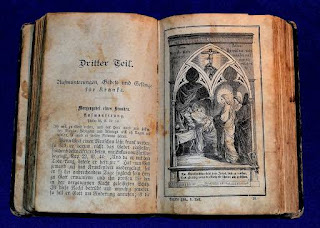Learn the literary sources meaning and literary sources examples. This article provides information on the literary sources of ancient Indian history.
Literary Sources Of History: The Ancient Indian History
Literary Sources Of History at a glimpse—The world, as we know it, has gone through a millennial of ages, stages, and events that contributed immensely to the changes we have today. This is from history itself.
In the words of an Indian author, "History is that ancient description which contains instructions of virtue, wealth, desire, and salvation." This explains its relevance.
In modern times, emphasis is often laid on history and other historical sources that can categorically explain the events of the past. Those that carry higher ideals than actual happenings. Most of these sources explain the origin and the development that have effected the necessary changes in modern society. Some of these countries with rich historical or ancient periods of history are India, Greece, and Rome.
In this article, our focus will primarily be on the literary sources of the history of ancient India. This article contains information on the following:
- The Source of History
- The Literary Sources Of History
- Literary Sources Examples
- Types Of Literary Sources Of History (Ancient India)
- Medieval India History Literary Sources
As said earlier, India is one of the countries with the oldest and richest history in the world. Evidently, the later India has been reformed and reconstructed through the use of information provided in these historical sources( archaeological sources and literary sources of history). As a result, a keen researcher looking forward to having sound knowledge about the ancient Indian sources will definitely be directed by the two major forms of historical sources.
Thus, to shed more light on past events, discoveries and studies are made either through archaeological sources or literary sources.
Also Read: Best Sites To Read And Download Complete Hausa Novel
The Literary Sources Of History?
Archaeological Sources, unlike literary sources, are sources like inscriptions, remains, monuments, and numismatics of the past that give more information about the happenings of the past. Archaeological sources examples are ancient buildings, houses, pottery, seals, coins, monuments, writing and compositions on stones or dividers, devices, gems, bones, extras, metal pieces, and different antiques.
Literary sources of history, on the other hand, are written materials such as books.
Take a Second!!!
What Are Literary Sources Of History
Literary sources meaning—
Literary sources of history are the information gathered in written forms that explains the essence of ancient culture and history. These sources comprise information contained in the form of journals, letters, books, and other automated and visual compositions.
Literary sources give us detailed information about the practice and way of life of our ancestors and often religious in nature.
Literary Sources Examples
Literary sources examples are journals, letters, books and investigative reports in impression, automated and visual compositions.
Also Read: Literary Sources Examples
Types Of Literary Sources Of History (India)
The literary sources of history are categorized into three, namely: Religious Literature, Secular Literature and Foreign Account.
- Religious Literature
The religious literature of ancient Indian history are Vedas, Dharmashastra/Smritis, Gita, Puranas, Vedangas or Upvedas, Ramayana and the Mahabharata, Jaina Agamas and Buddhist Tripitakas. Among all the aforementioned religious literary sources, the most ancient and popular out of these are the Vedas.
The Vedas are four in number, namely:
- the Rig Veda
- the Sam Veda
- the Yajur Veda and;
- the Atharva Veda.
Out of all these, the Rig Veda is acknowledged as the most important and ancient, with its antiquity going as far back as 1000 BC among the Vedas literary sources. Religious literature refers to the record of the religious life of the people and often plays an important role in bringing out the socio-political history of any country.
Magazines And Contest Writers Should Submit
- Secular Literature
What are Secular Literary Sources? — Secular Literary Sources of History, otherwise known as secular literature, generally means sources without any religious content. The secular literary sources contain wordly content not in any way related to religion or beliefs. The approach of this source is rather more rational and scientific in nature.
The secular literature is said to contain codes of duties, rules, and regulations for administrators and the public. They also prescribe rules in relation to property and their appropriate punishments.
The secular literary sources of the ancient India are, namely:
- Arthashastra
- Patanjali
- Sangam Literature (Madurai)
- Nitisar
- Brahmanas and Upanishads.
- Foreign Account
Just like the name, these are literary sources of history that contain the account of travellers that came to India. Irrespective of the fact that these sources are given by foreigners, they have proven to be significant in tracing the history of the ancient India.
The account of the foreigners are divided into three based on the travellers origins.
Greek-Roman writers
Megasthenes – Indica
Pliny – Natural History
Strabo – Geography
Chinese traveler
Fa-Hian, Hien Tsang, It SIng
Arab Traveller
Al-Baruni, Al-Suleman, Al-Masudi
The Literary Sources of Medieval Indian History
Below are some of the relevant literary sources of medieval Indian history. They are:
- Sultanate literature – These literature provides information about the social, political, economic, religious policy of the era of history.
- Utbee-
- Firdausi –
- Hassan Nizami –
- Fakhr-e-Mudawwir-
- Minhaj-ul-Siraj-
- Alauddin Anamalik Jubilee-
Literary sources of history have proven to be valuable in providing direct information about ancient India's life, culture, and history, right from the beginning of the Vedic age. However, in modern times, through the use of technological equipment, history can also be accurately known. This can be determined by using chemicals such as carbon dating and uranium dating. Despite this, the literary sources of history haven't lost their relevance.



%20(1).jpeg)

.png)
%20(3).jpeg)

COMMENTS